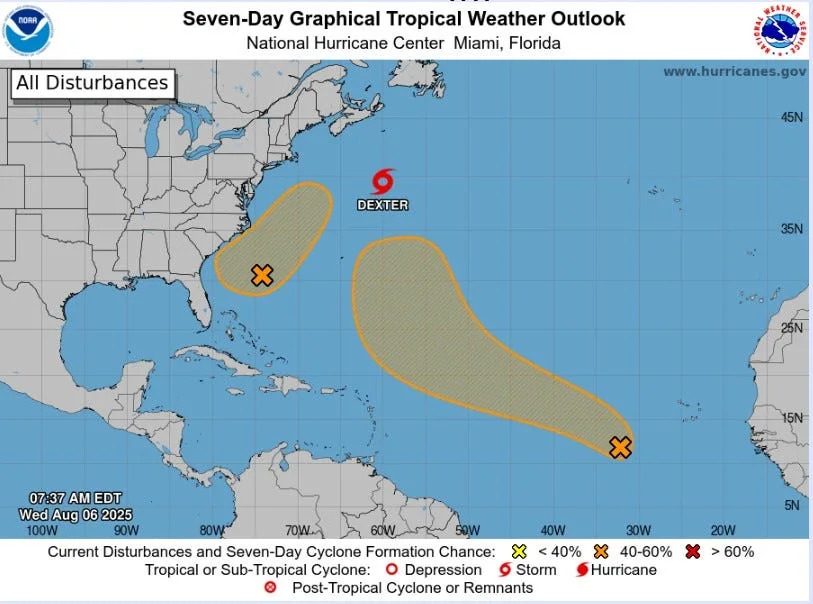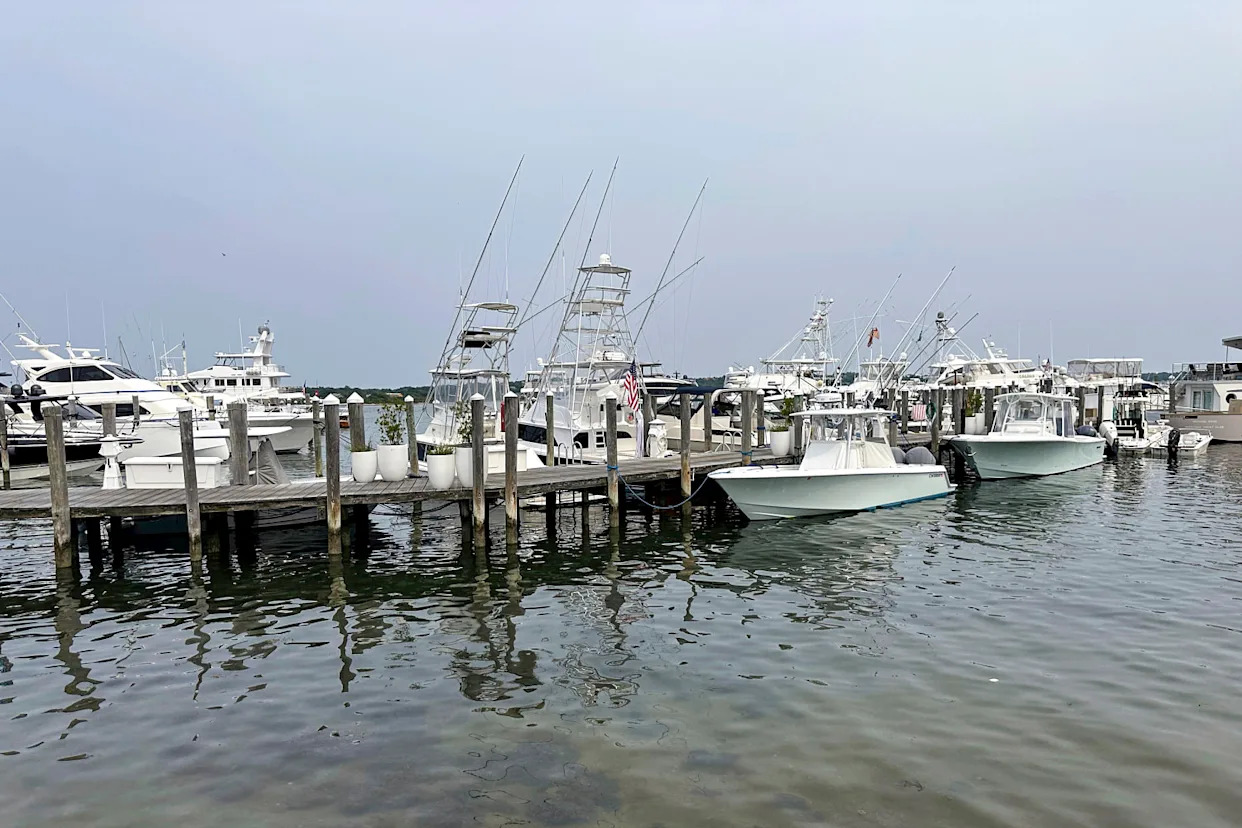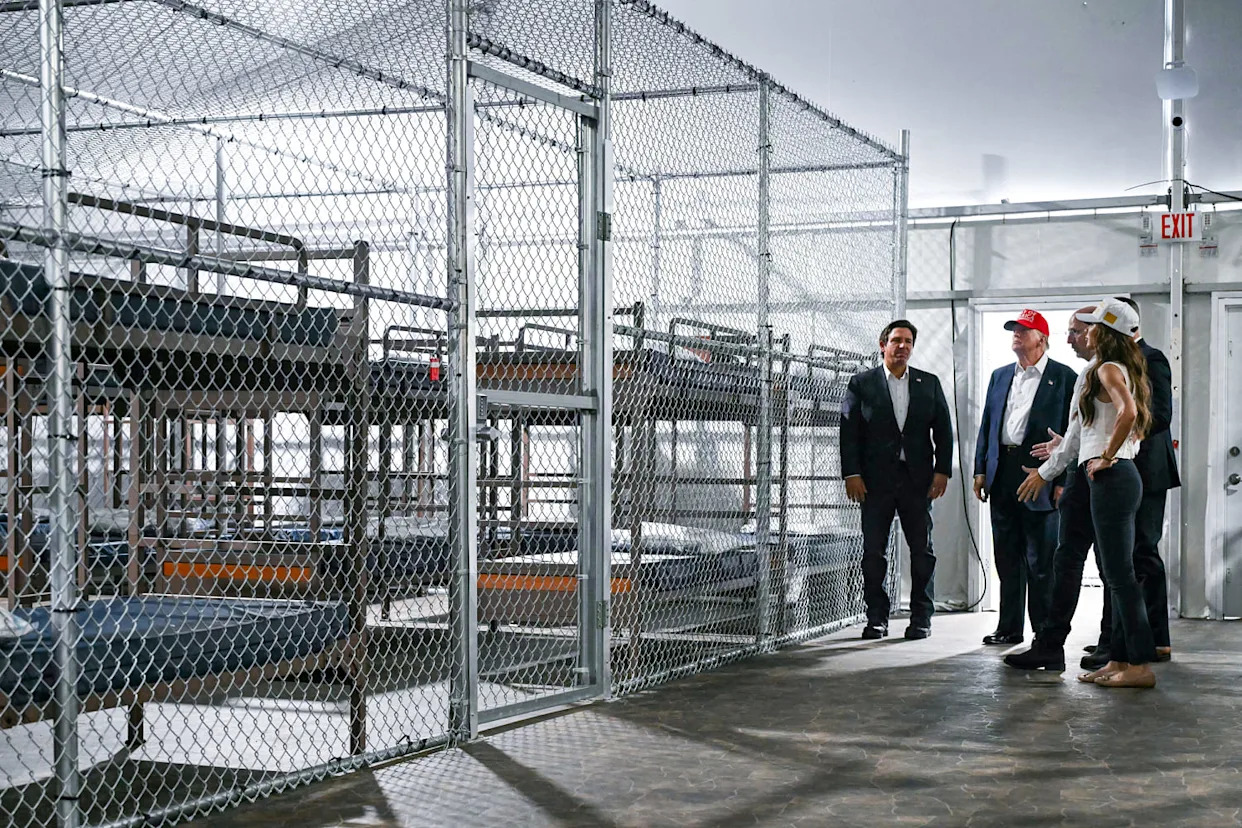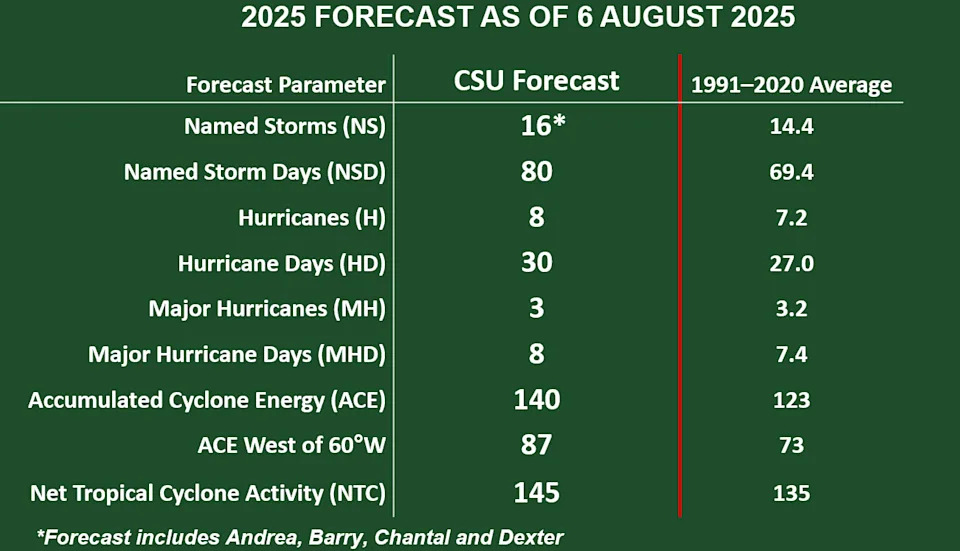The tropics are stirring with the fourth named storm forming Aug. 3, two areas percolating in the Atlantic and a leading hurricane forecast maintaining its prediction for an above-average hurricane season.
Colorado State University released its regular August update for 2025 with no change from its July forecast of a total of 16 named storms, including eight hurricanes, of which three could be major hurricanes.
The new forecast numbers include the four tropical storms that have already formed — Andrea, Barry, Chantal and Dexter — meaning there could be 12 remaining named storms for the season that ends Nov. 30.
An average hurricane season has 14 named storms and seven hurricanes, including three major hurricanes.
Phil Klotzbach, a hurricane researcher with CSU and the lead author of the forecast released Aug. 6, said there’s lower confidence in the prediction because of strong wind shear the past two months in the Caribbean. Wind shear early in the season typically means less tropical activity.
But tropical waters that started the season on the cooler side have warmed, the climate pattern is in neutral, which can add two to three named storms to a season, and thunderstorms are being stoked over Africa by the Madden Julian Oscillation, or MJO. The oscillation is a globe circling pattern of storminess that can incite tropical activity.
“Our seeds are a little stronger,” Klotzbach said about the tropical waves that come off Africa closer to the peak of hurricane season and can become tropical cyclones. “Unlike last year when the bell really didn’t ring until late September, things are really picking up.”

When is peak hurricane season?
Peak hurricane season lasts from about Aug. 20 through early October, with the pinnacle being Sept. 10. Historically, about 95% of all major hurricanes of Category 3 or higher happen after Aug. 1.
In 2024, three major hurricanes of Category 3 or higher formed in between Sept. 24 and Oct. 6, including Helene, Kirk and Milton. Hurricanes Isaac and Leslie and Tropical Storm Joyce also formed during that time.
As of early Aug. 6, Tropical Storm Dexter was moving out to sea, a weak area of low pressure several hundred miles off the southeastern coast was given a 40% chance of developing into a tropical cyclone over seven days, and a tropical wave in the far eastern Atlantic had a 60% chance of developing over seven days.
The next names on the 2025 hurricane list are Erin and Fernando.
More: Hurricane Season 2025: When the Internet storm is worse than the real thing
“There’s not just one storm that every model is jumping on, but there are indications given the favorability in the environment that something is going to form and that the waves off Africa are going to be more robust,” Klotzbach said.
Most forecasts for the 2025 season have predicted above-normal activity, including the National Oceanic and Atmospheric Administration. The administration, which will provide an update to its forecast later in August, predicts 13 to 19 named storms, including six to 10 hurricanes, and three to five major hurricanes.
Andrea, Barry and Chantel were short-lived tropical storms. Dexter is expected to turn post-tropical before the weekend.
The system near the southeast coast, which is brewing along the same stalled front that produced Dexter, could bring heavy rains to North Florida and the Panhandle regardless of development, said AccuWeather lead hurricane forecaster Alex DaSilva.
More: 2025 Florida Hurricane Guide: How to prepare for storm
"Then, late this week and this weekend, steering breezes will guide any low-pressure area and its downpours and gusty thunderstorms onshore in the Carolinas," DaSilva said.
So far this hurricane season, the number of named storms is above average, but the accumulated cyclone energy, which is the measure of a storm’s strength and longevity, is just 2.5. Normal for this time of year is 11.2.
It's been a decade since the Atlantic basin got through hurricane season with below-normal storm activity based on accumulated cyclone energy.
2025 is the 20th anniversary of hurricanes Katrina and Wilma
The 2025 seasonal forecasts are being issued amid a backdrop of the 20-year anniversaries of hurricanes Katrina and Wilma. The devastating storms brewed in a neutral El Niño Southern Oscillation, or ENSO, atmosphere similar to the current climate pattern.
Katrina made landfall as a large Category 3 hurricane on Aug. 29 near Buras-Triumph, Louisiana. It is responsible for a record 28-foot storm surge and an estimated 1,400 deaths.
Hurricane Wilma, whose anniversary will be recognized on Oct. 24, made landfall in southwest Florida as a Category 3, and is still the strongest Atlantic hurricane on record based on central pressure.
What happened during the 2024 hurricane season in Florida?
Three hurricanes made landfall in Florida in 2024. Category 1 Hurricane Debby hit near Steinhatchee on Aug. 5, Hurricane Helene made landfall near Perry in the Big Bend region on Sept. 26 as a Category 4 storm, and Hurricane Milton landed near Siesta Key as a Category 3 storm on Oct. 9.
By season's end, there were 18 named storms, including 11 hurricanes. Of the 11 hurricanes, five were major hurricanes. While that's above average, it doesn't top the record 2020 hurricane season, which included 30 named storms, including 14 hurricanes, of which seven were major hurricanes.
Kimberly Miller is a journalist for The Palm Beach Post, part of the USA Today Network of Florida. She covers real estate, weather, and the environment. Subscribe to The Dirt for a weekly real estate roundup. If you have news tips, please send them to [email protected]. Help support our local journalism, subscribe today.
Kimberly Miller is a journalist for The Palm Beach Post, part of the USA Today Network of Florida. She covers real estate, weather, and the environment. Subscribe to The Dirt for a weekly real estate roundup. If you have news tips, please send them to [email protected]. Help support our local journalism, subscribe today.
This article originally appeared on Palm Beach Post: Colorado State University updates its 2025 hurricane season forecast








Comments